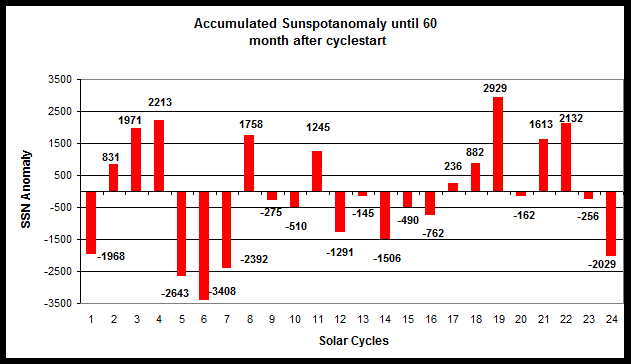Eine Vielzahl von geologischen Analysen lässt keinen Zweifel daran, dass Aktivitätsschwankungen der Sonne einen enormen Einfluss auf das irdische Klimageschehen ausüben. Wie die Kopplung genau funktioniert, darüber sind sich die Forscher allerdings noch uneinig. Im Mai 2012 hatten wir bereits an dieser Stelle über eine Studie berichtet, die eine Kopplung der Nordatlantischen Oszillation (NAO) und der solaren Aktivität dokumentierte (siehe „Sonne übt starken Einfluss auf die Nordatlantische Oszillation (NAO) aus: Neue Studie im Journal of Geophysical Research„). Nun hat ein weiteres Forscherteam eine solche Beeinflussung bestätigen können. Im September 2013 veröffentlichte ein Forscherteam um Limin Zhou von der East China Normal University im Fachmagazin Advances in Space Research eine Studie, in der die Wissenschaftler den Sonneneinfluss für diesen bedeutenden atlantischen Ozeanzyklus sowohl im Tages- als auch im Jahresmaßstab feststellen konnten. Zhou und Kollegen vermuten, dass die Kopplung über das elektrostatische Feld der Erde und Effekte in der Stratosphäre abläuft.
Im Folgenden die Kurzfassung der Arbeit im englischen Original (Fettsetzung ergänzt):
Indices of the North Atlantic Oscillation and the Arctic Oscillation show correlations on the day-to-day timescale with the solar wind speed (SWS). Minima in the indices were found on days of SWS minima during years of high stratospheric aerosol loading. The spatial distribution of surface pressure changes during 1963-2011 with day-to-day changes in SWS shows a pattern resembling the NAO. Such a pattern was noted for year-to-year variations by Boberg and Lundstedt (2002), who compared NAO variations with the geo-effective solar wind electric field (the monthly average SWS multiplied by the average southward component, i.e., negative Bz component, of the interplanetary magnetic field). The spatial distribution of the correlations of geopotential height changes in the troposphere and stratosphere with the SWS; the geoeffective electric field (SWS∗Bz); and the solar 10.7 cm flux suggests that solar wind inputs connected to the troposphere via the global electric circuit, together with solar ultraviolet irradiance acting on the stratosphere, affect regional atmospheric dynamics.
Mit Dank an The Hockey Schtick.
Eine weitere Studie zu diesem Themenkomplex erschien im Oktober 2013 in den Environmental Research Letters. Eine Gruppe des British Antarctic Survey um Mai Mai Lam fand in ihrer Arbeit eine systematische Beeinflussung des Luftdrucks in hohen und mittleren Breiten durch das interplanetare magnetische Feld, welches wiederum durch den Sonnenwind bzw. die Sonnenaktivität mitgesteuert wird. Wer das genauer wissen will, kann auf WUWT und The Hockey Schtick gute Zusammenfassungen finden. Hier die Kurzfassung des Artikels von Lam und Kollegen (Fettsetzung ergänzt):


